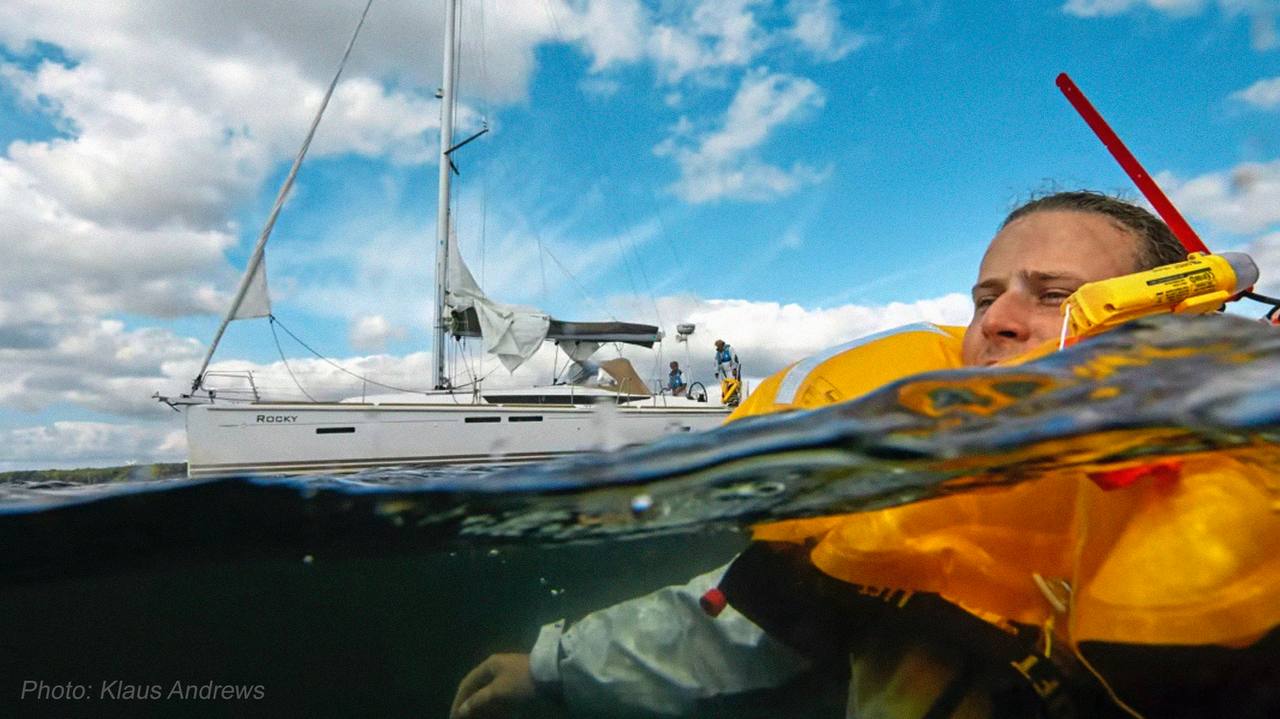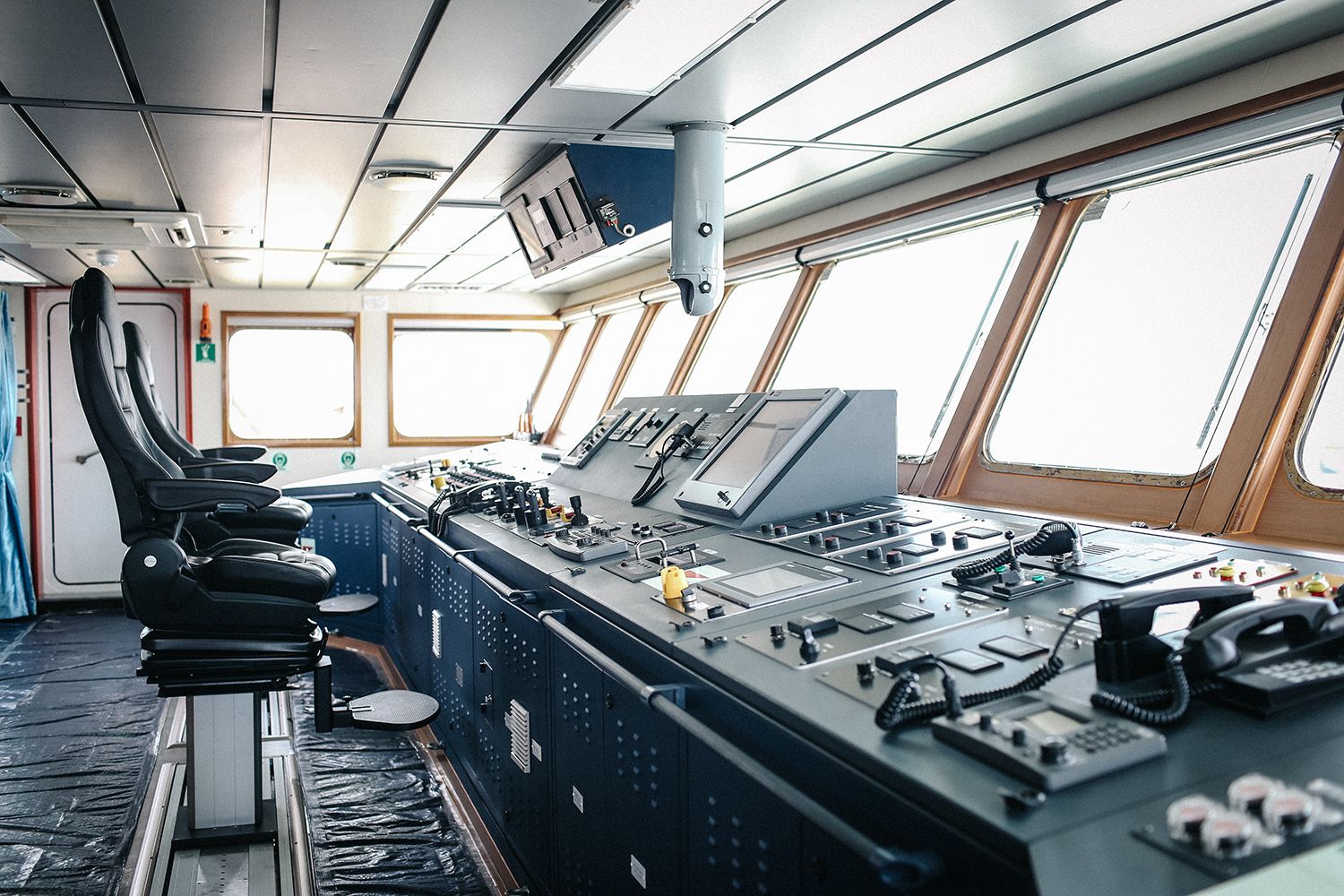A new European regulation comes into force: which AIS MOB devices will survive after January 1, 2025?
Overloading of AIS channels is one of the challenges facing the maritime industry today. The work on finding solutions is carried out in various directions. One of them was proposed in the ITU recommendations and concerns the redistribution of frequencies used by AIS MOB devices.
Based on the relevant documents, the European ECC (Electronic Communications Committee) adopted a regulation. According to it, from January 1, 2025, the use of AIS frequencies will be prohibited for certain types of AIS MOB devices in a number of European countries. That is, not all current AIS MOBs will remain in use.
Let's find out what the background is for the implementation of this initiative and what consequences it entails.
What are MOB devices
MOB devices ("man overboard") are an essential equipment for ensuring the safety of crew members working on deck. They are indispensable on board any commercial vessel, fishing trawler, diving vessel or pleasure craft. The device is attached to a personal life jacket and can be activated in a "man overboard" situation when a person relies on localized rescue.
The use of AIS technology allows the MOB device to transmit an emergency report containing its position and ID in the VHF frequency range. These notifications can be received by AIS equipped vessels that are in the vicinity. If the AIS receiver is interfaced with a chart plotter or ECDIS, then this information can be displayed on its screen. The integrated GNSS receiver provides location accuracy within a few meters, which significantly narrows the search area.
AIS MOB devices enabled with the DSC (digital selective calling ) feature can activate the DSC signal on the ship's VHF radio station, alerting the crew about the MOB situation.
With all this, the operation of AIS MOB devices has been revised for use in European waters. What is the reason for this? MOB devices have been classified according to the changing realities in the maritime environment and a new equipment class has been introduced - Class M devices.
Classification of MOB devices. AMRD Group A and AMRD Group B
A new approach has been developed by regulatory organizations to improve the efficiency and reliability of AIS transmissions. It is aimed at reducing the load on the AIS system: devices that do not enhance the safety of shipping should be prohibited from using channels AIS 1 and AIS 2.
All mobile devices operating at sea and transmitting independently of a ship station or a coast station are now designated as autonomous maritime radio devices, or AMRDs.
They are divided into 2 categories: AMRD Group A and AMRD Group B.
AMRD Group A are devices that enhance the safety of navigation.
This group includes:
- MOB devices using VHF DSC (Class M)
- Mobile Aids to Navigation (Mobile AtoN)
MOB device using VHF DSC, or Class M device, is a personal radio equipment that alerts via digital selective calling (DSC) and is tracked by AIS. It is fitted with an internal electronic position fixing device and a transceiver operating on VHF DSC Channel 70 and AIS.
The device should also be capable of transmitting a distress self-cancel message. If after activation the MOB device receives a DSC distress alert acknowledgement message, in response to the related alerting, the DSC transmitter should be switched off and provide an indication of the reception of the acknowledgment message.
The World Radiocommunication Conference 2019 (WRC-19) concluded that only AMRD Group A are permitted to use RR Appendix 18 frequencies which are allocated for DSC (Channel 70, 156.525 MHz) and for the AIS (AIS 1, 161.975 MHz and AIS 2, 162.025 MHz).
AMRD Group B are devices that do not enhance the safety of navigation, they transmit signals or information that do not concern the ship and can distract or mislead the navigator thereby reducing the safety of navigation.
IMO has assigned to this group:
- MOB devices without DSC
- fishnet markers
- diver locating devices, etc.
IMO has proposed that legacy AMRD, categorized as Group B but using the VHF channels AIS 1 and AIS 2, should no longer be present on the market.
As WRC-19 concluded, AMRD Group B may only use the frequency 160.900 MHz (channel 2006). These devices are limited to a transmitter e.i.r.p. of 100 mW and an antenna height not exceeding 1 m above the surface of the sea.
The development of suitable equipment for monitoring the channel 2006 is required.
AIS Class M Regulation or ECC/DEC/(22)02
The European ECC (Electronic Communications Committee), recognizing the need to implement these developments aimed at enhancing the safety of navigation and ensuring the integrity of GMDSS and AIS, is the first body to incorporate them into its national legislation.
On July 1, 2022, the ECC Decision (22)02 "Regulation to operate Autonomous Maritime Radio Devices (AMRD) in CEPT" was approved. This document is intended to harmonize the operation of AMRD Group A and Group B according to the rules published in the ITU Radio Regulations, Edition 2020. It has become the main document regulating the introduction of these types of devices.
What will change from January 1, 2025?
Starting from 2025, all AIS MOBs must be Class M compliant to be sold in a number of European countries.
These devices should be enabled with GNSS for localization, an AIS transmitter to be tracked by vessels nearby, and an integrated DSC transmitter that can both send and receive DSC (disabling of the automatic mechanisms should also be provided). Only equipment that complies with these requirements can be entitled to operate on channel AIS 1, channel AIS 2 and channel 70.
If possible, current MOB devices that have been assigned to Group B should be switched to the channel 2006 (160.900 MHz). Otherwise, these devices should be taken out of use.
Operators of vessels flying the flags of countries involved in these regulatory changes should ensure that their vessels' equipment complies with the latest standard.
At the moment, this is an initiative implemented by certain European countries, which may later be picked up by other countries.
As of October 2024, the AIS Class M regulation is in effect in the following countries: Denmark, Georgia, Moldova, Ireland, Italy, Slovak Republic, Switzerland.
And these are the countries which are planning or studying the possibility of adopting the ECC Decision (22)02: Belgium, Montenegro, Germany, North Macedonia, Hungary, United Kingdom, Luxembourg, Netherlands.
Countries that have decided not to join this initiative: Czech Republic, Latvia.
All other countries will not be affected by these changes, all available models of AIS MOB devices will remain in use there.
Testing of AIS MOB devices Class M
According to IMO requirements, AIS MOB devices that are classified as a new type of equipment, Class M, are not subject to mandatory testing. This issue falls under the responsibility of the ship's administration.
Still, since this equipment ensures the safety of life, it is useful to periodically verify its operability. These devices can be checked by multifunctional set for testing of GMDSS and AIS equipment – MRTS-7M
By Olga Davydova
References:
ECC Decision (22)02 - Regulation to operate Autonomous Maritime Radio Devices (AMRD) in CEPT
Recommendation ITU-R M.2135 - Technical characteristics of autonomous maritime radio devices operating in the frequency band 156-162.05 MHz
Recommendation ITU-R M.493 - Digital selective-calling system for use in the maritime mobile service
Recommendation ITU-R M.1371 - Technical characteristics for an automatic identification system using time division multiple access in the VHF maritime mobile frequency band
Recommendation ITU-R M.585 - Assignment and use of identities in the maritime mobile service
ITU Radio Regulations, Edition of 2020
International Convention for the Safety of Life at Sea (SOLAS), 1974






Be the first to comment